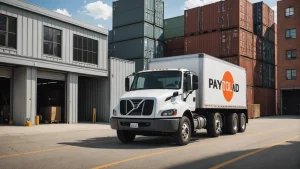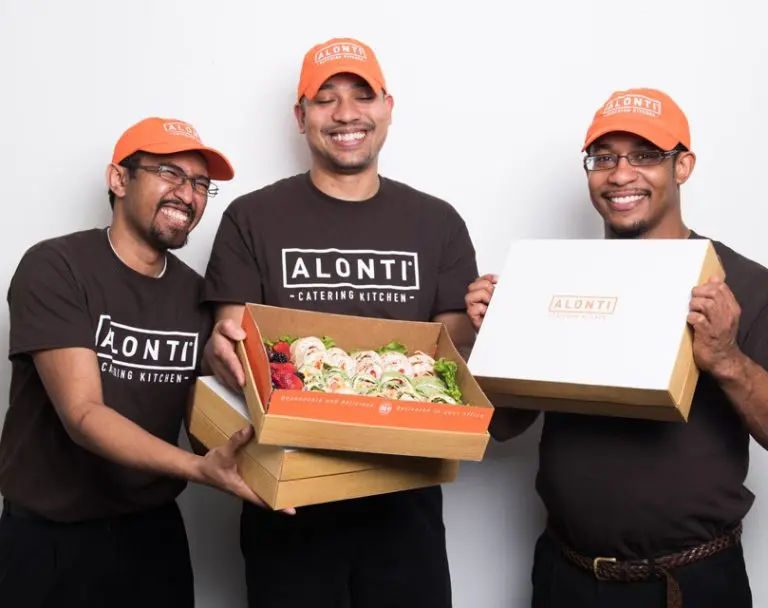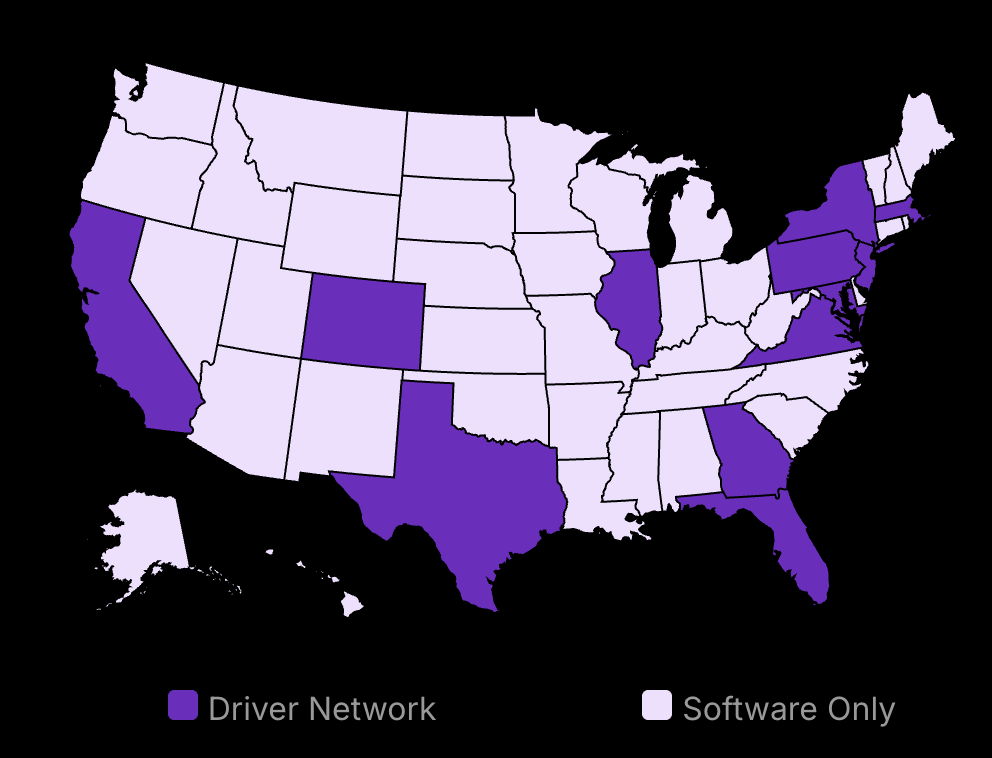Opening or running a successful restaurant business is often fueled by passion, culinary creativity, and a dedication to hospitality. But behind every great dish and welcoming atmosphere lies a crucial, often less glamorous, element: capital.
Whether you’re dreaming of launching a brand new restaurant, expanding an existing restaurant space, upgrading essential restaurant equipment, or simply ensuring smooth day-to-day operations, restaurant funding is the essential ingredient that turns ambitious visions into thriving realities. Without adequate financial backing, even the most promising concepts can struggle to get off the ground or weather the inevitable storms of the dynamic restaurant industry.
For many restaurant owners, the journey to securing restaurant funding can seem daunting. The landscape of financing options is vast, ranging from traditional loans offered by a bank or credit union to modern restaurant funding solutions like online lending and crowdfunding. Understanding which path best suits your unique business needs, navigating complex eligibility requirements, and preparing a compelling case for lenders requires careful planning and knowledge.
This article serves as your guide, exploring 10 key funding opportunities available to small business owners in the food service sector and providing practical tips to help you confidently get funding and pave the way for long term success.

Save 80% of delivery management time
We handle everything:
- Dedicated operations manager
- Real-time tracking dashboard
- Automated customer notifications
- Urgent issue resolution
What is restaurant financing?
So, what exactly is restaurant financing? Simply put, it’s the range of methods restaurant owners use to obtain capital – money – specifically for their restaurant business needs. It’s the essential ingredient that helps get a new restaurant off the ground or allows an existing restaurant to expand, renovate, or simply navigate the day-to-day financial demands of the challenging restaurant industry.
This broad term covers various funding opportunities, from traditional loans obtained through a bank or credit union, specialized SBA loans backed by the Small Business Administration, faster options from alternative online lenders, to things like a merchant cash advance based on credit card sales or flexible business line of credit options.
Whether a business owner needs funds for significant equipment purchases, purchasing inventory, managing seasonal cash flow dips, covering payroll and food costs, implementing a new marketing strategy, or obtaining crucial working capital, restaurant funding provides the means. Understanding the different types of restaurant financing available is the first step for any small business owner looking to sustain operations and achieve long-term success. It’s about finding the right financing option to match specific business needs and goals.
10 Best Restaurant Financing Options Overview
1. Traditional Bank Loans
Best For Low-Cost, Long-Term Funds for Established Restaurants
|
Pros |
Cons |
|---|---|
|
✔️ Lower interest rates compared to alternatives. |
❌ Strict eligibility requirements and lengthy approval process. |
|
✔️ Longer repayment terms suitable for established businesses. |
❌ May require significant collateral. |
|
✔️ Often backed by reputable institutions like a trusted bank or credit union. |
❌ Less accessible for newer or smaller businesses, like a new restaurant. |
Traditional bank loans represent a common form of restaurant funding for the established restaurant business. Offered by a bank or credit union, these business loans typically feature more favorable interest rates and longer repayment terms (often 1-10 years with fixed monthly payments) compared to other financing options.
However, securing one requires a strong financial history, good credit, and often substantial collateral, such as real estate or valuable restaurant equipment. The approval process is notoriously thorough and can take weeks, demanding detailed financial statements and a robust business plan.
While excellent for long-term investments or significant equipment purchases for an existing restaurant, traditional lenders can be difficult for startups or small business owners without a proven track record to access, making securing restaurant funding challenging through this route for some. These traditional loans are a cornerstone of restaurant financing for those who meet the strict eligibility requirements.
2. SBA Loans
Best For Government-Backed Loans for Startups & Varied Needs
|
Pros |
Cons |
|---|---|
|
✔️ Competitive interest rates with government backing. |
❌ Lengthy and intensive approval process (up to 60+ days). |
|
✔️ Flexible terms and lower down payments possible. |
❌ May still require collateral for some larger SBA loan types. |
|
✔️ Suitable for a wide range of business purposes, including working capital. |
❌ Limited to businesses meeting Small Business Administration size standards and other qualifying businesses. |
A Small Business Administration loan, commonly known as an SBA loan, isn’t issued directly by the Small Business Administration (SBA) but is partially guaranteed by them, reducing risk for lenders like banks and credit unions.
This makes it a popular restaurant funding solution for small business owners, including those in the restaurant industry. SBA loans often come with competitive interest rates (capped by regulation) and potentially longer repayment terms (up to 25 years for some programs), making them suitable for significant investments like restaurant equipment financing, real estate, or securing ample working capital. While some microloans may not require collateral, larger amounts often do.
The approval process is comprehensive and can be lengthy, requiring substantial documentation. Programs like the SBA 7(a) loan are versatile, covering various business needs. Eligibility requirements include being a for-profit, U.S.-based small business meeting specific size standards. Finding a preferred lender experienced with SBA applications can streamline the process for eligible restaurants. This funding option supports long-term success.
3. Alternative Online Lenders
Best For Fast Funding for Lower Credit Scores or Urgent Needs
|
Pros |
Cons |
|---|---|
|
✔️ Faster approval and funding compared to bank loans. |
❌ Higher interest rates and fees (potentially 7-30%+). |
|
✔️ More accessible for restaurant owners with lower credit scores. |
❌ Shorter repayment terms (e.g., 3-24 months) can strain cash flow. |
|
✔️ Flexible repayment options, sometimes daily or weekly. |
❌ Potential for predatory lending practices; diligence is required. |
When traditional lenders are not an option or speed is critical, alternative online lenders provide a vital restaurant funding avenue. These lenders often prioritize a restaurant business’s revenue and cash flow over its credit score or financial history, making funding opportunities more accessible for newer businesses or those with less-than-perfect credit. The approval process is significantly faster, often providing funds within 1-7 days.
This makes them ideal for addressing short-term needs like purchasing inventory, covering payroll, or managing unexpected expenses. However, this convenience comes at a cost: interest rates are typically much higher than traditional loans, and repayment terms are shorter, often involving daily or weekly deductions.
While a valuable financing option for quick working capital, business owners must carefully evaluate the total cost and ensure the repayment schedule fits their cash flow. This is a key restaurant financing tool for immediate needs.
4. Merchant Cash Advances (MCAs)
Best For Quick Cash Based on Future Card Sales Volume
|
Pros |
Cons |
|---|---|
|
✔️ No traditional collateral required; based on future credit card sales. |
❌ High effective cost due to factor rates (e.g., 1.1-1.5) not interest rates. |
|
✔️ Quick approval process and funding, often within a week. |
❌ Daily or weekly deductions can significantly impact daily cash flow. |
|
✔️ Automatic repayment tied to sales volume reduces manual effort. |
❌ Best suited only for businesses with high, consistent card sales volume. |
A Merchant Cash Advance (MCA) is not technically a loan but an advance on future sales. A funding option provider gives the restaurant business a lump sum in exchange for a percentage of its daily or weekly credit and debit card sales until the advance plus a fee (represented by a factor rate) is repaid.
Securing restaurant funding this way is fast, often taking less than a week, as approval relies heavily on the restaurant business’s history of credit card sales rather than traditional credit metrics. No physical collateral is needed. This makes MCAs appealing for restaurant owners needing quick access to working capital to manage cash flow gaps or seize immediate opportunities.
However, the cost is usually very high when calculated as an APR, and the automatic daily/weekly repayments can put a strain on operational funds, especially during slower periods. It’s crucial for a business owner to understand the total payback amount and impact on their restaurant running finances before accepting a merchant cash advance.
5. Business Line of Credit (LOC)
Best For Flexible Funds for Managing Cash Flow Gaps
|
Pros |
Cons |
|---|---|
|
✔️ Flexible access to funds as needed, up to a set limit. |
❌ Typically higher interest rates compared to traditional loans. |
|
✔️ Pay interest only on the amount drawn, controlling costs. |
❌ May require collateral or strong revenue proof, especially from a bank or credit union. |
|
✔️ Reusable credit line; replenish funds by repaying the drawn amount. |
❌ Variable rates can increase borrowing costs unexpectedly over time. |
A business line of credit (LOC) offers flexible restaurant funding, acting like a credit card for the restaurant business. Restaurant owners are approved for a maximum credit limit and can draw funds as needed, up to that limit. Interest is only charged on the outstanding balance. Once repaid, the funds become available again.
This makes a restaurant line of credit ideal for managing fluctuating cash flow, bridging short-term gaps, purchasing inventory, handling unexpected expenses, or funding a marketing strategy boost. Banks or credit unions may offer LOCs with better rates but stricter eligibility requirements (good credit, high revenue).
Alternative lenders provide faster access, often focusing more on revenue, but with higher interest rates. While some LOCs are unsecured, larger amounts or those from traditional lenders might require collateral. This financing option provides readily available working capital for ongoing business needs.
6. Equipment Financing
Best For Financing Specific Equipment Purchases
|
Pros |
Cons |
|---|---|
|
✔️ The restaurant equipment itself serves as collateral, reducing lender risk. |
❌ Risk of equipment depreciation affecting its collateral value. |
|
✔️ Quick approval process, often within 2 days with minimal paperwork. |
❌ May require down payments up to 20% of the equipment cost. |
|
✔️ Helps businesses acquire necessary assets for operations or growth. |
❌ Funding is strictly limited to equipment purchases or equipment upgrades. |
Restaurant equipment financing is a specific type of business loan designed solely for purchasing machinery and tools needed for the restaurant business. This could include ovens, freezers, POS systems, furniture, or even food trucks.
The key feature is that the restaurant equipment being purchased acts as the collateral for the loan. This generally simplifies the approval process and makes it faster than many other funding opportunities, as the lender’s risk is secured by a tangible asset. Interest rates are often competitive. However, restaurant owners typically need to provide a down payment (often 10-20%), and they must consider potential equipment depreciation.
This funding option is excellent for acquiring essential assets without draining working capital reserves, facilitating equipment upgrades for an existing restaurant or outfitting a new restaurant. It’s a targeted restaurant funding solution directly addressing asset acquisition business needs.
7. Crowdfunding
Best For Debt-Free Funding & Community Building for Startups
|
Pros |
Cons |
|---|---|
|
✔️ No debt or interest rates (typically equity or rewards-based). |
❌ Success heavily depends on a compelling pitch and effective marketing strategy. |
|
✔️ Builds community support, brand awareness, and customer loyalty. |
❌ Time-consuming to create and manage a successful fundraising campaign. |
|
✔️ Accessible for innovative new restaurant concepts or food trucks. |
❌ May not be suitable for businesses needing very large sums of restaurant funding. |
Crowdfunding allows restaurant owners to raise funds from a large number of people, typically via online platforms. Instead of traditional debt, investors typically receive rewards (like meal vouchers), equity in the restaurant business, or simply donate. This financing option can be excellent for early stages businesses, particularly those with a unique concept or strong community connection.
A successful fundraising campaign not only provides capital but also validates the business idea and builds a customer base before opening. There’s no collateral, and the approval process depends on the platform and the appeal of the business plan and pitch. However, running a campaign requires significant effort in marketing and promotion. There’s no guarantee of reaching the funding goal. It’s a powerful tool for securing restaurant funding while simultaneously building buzz, making it distinct among funding opportunities.
8. Commercial Real Estate (CRE) Loans
Best For Financing Property Purchase for Restaurant Operations
|
Pros |
Cons |
|---|---|
|
✔️ Enables ownership of the restaurant business property. |
❌ High risk if property values decline, impacting collateral value. |
|
✔️ Long term repayment terms (5-20 years) reduce monthly burden. |
❌ Lengthy approval process and strict eligibility requirements. |
|
✔️ Potential for property value appreciation over time. |
❌ Significant collateral required (the property itself secures the business loan). |
Commercial Real Estate (CRE) loans are specifically designed for business owners looking to purchase, build, or refinance property for their restaurant business. Similar to traditional bank loans but secured directly by the real estate, these loans allow restaurant owners to gain equity in their premises, offering stability and potential appreciation. Repayment terms are typically long (5-20 years), resulting in manageable monthly payments.
However, the approval process is rigorous, demanding strong financial statements, a solid business plan, a significant down payment, and a good financial history. The property itself serves as collateral, meaning default could lead to losing the premises. While a major undertaking, owning the property can be crucial for the long term success and stability of an existing restaurant or a planned new restaurant location, making it a significant restaurant financing strategy.
9. Friends and Family Loans
Best For Informal, Low-Cost Funding from Personal Networks
|
Pros |
Cons |
|---|---|
|
✔️ Low or no interest rates due to personal relationships. |
❌ High risk of damaging personal relationships if the loan isn’t repaid as agreed. |
|
✔️ Flexible repayment terms and informal approval process. |
❌ Lack of formal agreements can lead to misunderstandings or disputes later. |
|
✔️ Easier access to get funding for early stages businesses. |
❌ Limited amount of restaurant funding typically available compared to institutions. |
Borrowing from friends and family is often one of the first funding opportunities considered by small business owners, especially during the early stages of launching a new restaurant. The primary advantages are the potential for very low (or zero) interest rates and highly flexible repayment terms, based on trust and personal relationships rather than strict financial history or collateral.
The approval process is informal. However, this financing option carries significant personal risk. It is essential to treat it like a formal business loan: put everything in writing, including the loan amount, repayment schedule, and any interest, to avoid misunderstandings and protect relationships. While potentially easier to secure restaurant funding this way initially, it’s often suitable only for smaller amounts of working capital or initial startup costs.
10. Purchase Order Financing
Best For Funding Upfront Costs to Fulfill Large Orders
|
Pros |
Cons |
|---|---|
|
✔️ Enables fulfillment of large orders without draining working capital. |
❌ High fees and factor rates increase the cost significantly (not standard interest rates). |
|
✔️ Fast approval process based on verified purchase order validity. |
❌ Depends entirely on successful order fulfillment and customer payment for repayment. |
|
✔️ Helps manage cash flow for significant growth opportunities. |
❌ Limited primarily to businesses dealing with tangible goods and purchase orders. |
Purchase Order (PO) financing is a short-term funding option where a finance company advances funds to pay your suppliers directly, enabling your restaurant business (or more commonly, its suppliers or businesses fulfilling large catering/event orders) to fulfill a large customer order.
This is useful when a business owner lacks the immediate cash flow to cover the upfront food costs or purchasing inventory required. Approval is fast and based on the creditworthiness of the customer who placed the order and the validity of the PO itself, rather than your own financial history.
Once the customer pays the invoice, the finance company deducts its fees and sends the remaining profit to the business owner. While it allows businesses to take on large orders they couldn’t otherwise afford, PO financing is expensive, often using high factor rates. It’s a specific tool for managing working capital tied directly to confirmed sales, helping to raise funds for growth-related business needs.

How to Prepare for Restaurant Financing?
Before you even start applying to get funding, taking time to prepare significantly increases your chances of securing restaurant funding on favorable loan terms. Think of it as mise en place for your finances. Lenders, whether traditional lenders like a bank or credit union or private investors, want to see a well-organized and viable restaurant business.
First, a comprehensive business plan is non-negotiable. It should outline your concept, target market, marketing strategy, operations, management team, and crucially, detailed financial projections. Gather all necessary documents beforehand: this includes personal and business financial statements, bank statements (typically several months’ worth), tax returns, licenses, and leases.
Understand your financial history and credit scores (both personal and business). Lenders scrutinize these to assess risk and determine interest rates. Clearly define how much restaurant funding you need and precisely how you intend to use it – be specific about equipment purchases, working capital, purchasing inventory, etc.
Research various restaurant funding solutions to understand their specific eligibility requirements, repayment plans, and typical approval process timelines. Knowing whether an SBA loan, traditional loan, or perhaps restaurant equipment financing is the best fit before you apply saves time and targets your efforts effectively. This preparation shows lenders you are a serious, organized business owner ready for long term success.

Why Seek Restaurant Financing?
The restaurant industry is notoriously capital-intensive. From initial build-out to daily operations, significant funds are often required, prompting restaurant owners to seek restaurant financing. Why do they apply? The reasons are diverse:
Launching a New Restaurant: Startup costs are substantial, covering everything from leasehold improvements and initial restaurant equipment purchases to licenses, initial food costs, and marketing. Restaurant funding is often essential to even open the doors.
Expansion or Renovation: An existing restaurant looking to grow might need capital to open a new location, expand its current space, or undertake renovations for equipment upgrades or a refreshed look to meet increased demand.
Equipment Needs: Purchasing new or replacing aging restaurant equipment – ovens, freezers, POS systems, even food trucks – requires significant outlay. Restaurant equipment financing is a common funding option here.
Working Capital & Cash Flow Management: Restaurants often face fluctuating cash flow due to seasonality, unexpected expenses, or gaps between paying suppliers (covering food costs, purchasing inventory) and receiving customer payments. A business line of credit or short-term restaurant loan can bridge these gaps.
Marketing & Growth Initiatives: Implementing a new marketing strategy, launching delivery services, or adding catering requires investment that might necessitate external restaurant funding.
Covering Unexpected Costs or Emergencies: Unforeseen circumstances, such as major repairs or navigating periods of difficulty like pandemic related revenue loss, might require emergency assistance through loans or other restaurant funding solutions.
Refinancing Debt: Consolidating existing debt or refinancing at better interest rates or loan terms can also be a reason to seek a new restaurant business loan.
Ultimately, securing restaurant funding allows small business owners in the food service sector to invest in their business needs, manage operations smoothly, and pursue growth opportunities critical for long term success.

7 Tips for Getting Faster Restaurant Financing
When business needs are urgent, waiting weeks or months for restaurant funding isn’t always feasible. While patience is often required, especially for traditional loans from a bank or credit union or an SBA loan, there are ways restaurant owners can potentially speed up the approval process and get funding faster:
1. Be Over-Prepared
Have your comprehensive business plan, updated financial statements, bank statements (usually 3-6 months), tax returns, licenses, lease agreements, and any other potentially required documents meticulously organized and readily accessible before you even approach a lender. Lenders appreciate thoroughness, and having everything ready eliminates common delays caused by missing paperwork. This demonstrates professionalism and seriousness about securing restaurant funding.
2. Know Your Numbers & Credit
Thoroughly understand your personal and business credit scores and reports, as well as key financial metrics like debt-to-income ratio and profitability margins. Check for errors on your credit reports and address any potential red flags (like late payments or high balances) proactively. A strong financial history and a clear understanding of your financial position allow lenders to assess risk more quickly, potentially speeding up the approval process.
3. Choose the Right Lender Type
If speed is the absolute priority, focus your search on funding opportunities known for faster turnaround times. Alternative online lenders and merchant cash advance providers often have streamlined applications focused heavily on recent revenue and cash flow, leading to funding in days rather than weeks. A business line of credit, once established, also offers quick access to working capital. While potentially carrying higher interest rates or fees, these options prioritize speed for urgent business needs.
4. Target Appropriately
Don’t waste valuable time applying for small business loans or restaurant funding solutions where you clearly don’t meet the minimum eligibility requirements. Carefully research each lender’s criteria regarding time in business, minimum revenue, credit score thresholds, and industry focus. Applying only to lenders whose requirements you meet significantly increases your chances of approval and avoids unnecessary application processing time.
5. Work with Experts (If Applicable)
For complex applications like an SBA loan, partnering with an experienced broker, consultant, or an SBA preferred lender can be invaluable. These experts understand the nuances of the Small Business Administration requirements and paperwork, helping you navigate the approval process more efficiently and avoid common pitfalls that can cause delays. Their established relationships and familiarity can often streamline communication.
6. Be Responsive
Once you’ve submitted your application, be prepared to answer lender questions promptly and provide any additional requested documentation without delay. Underwriting involves verification and clarification. Slow responses from your end directly translate into a slower funding timeline. Assign a point person or check your communications frequently to ensure you’re addressing lender inquiries quickly.
7. Clearly Articulate Needs & Repayment
Be crystal clear and specific about the exact amount of restaurant funding you require and precisely how you intend to allocate it. Equally important is presenting realistic, detailed financial projections that clearly demonstrate your ability to manage the debt and make timely payments according to the proposed repayment plans. A confident and well-supported repayment strategy assures lenders of your restaurant business’s viability.
While there’s no magic bullet for instant restaurant financing, meticulous preparation and choosing the right funding option for your timeline can significantly reduce waiting times for the crucial capital needed to keep your restaurant running.
Frequently Asked Questions (FAQs)
How crucial is a comprehensive business plan when trying to get funding for a restaurant?
A comprehensive business plan is non-negotiable; it outlines the concept, market, operations, management, and financial projections, demonstrating viability to lenders and investors.
What are the main advantages and disadvantages of securing a traditional business loan for restaurant financing?
Advantages include lower interest rates and retaining ownership. Disadvantages involve strict eligibility, lengthy approvals, and often requiring significant collateral.
Besides startup or equipment, what operational expenses, like food costs, can restaurant financing help cover?
Financing can cover various operational needs including purchasing inventory, managing cash flow fluctuations, covering payroll, handling unexpected expenses, and funding marketing initiatives.
What alternatives to traditional loans, potentially involving private investors, exist for restaurant owners?
Alternatives include equity crowdfunding (raising funds from many individuals online) and seeking capital from angel investors (individuals offering funds often with mentorship), both involving private funding sources.
With so many choices available, what is the key consideration when selecting the right funding option for a restaurant?
The key consideration is finding the funding option that best matches the restaurant’s specific business needs, stage of growth, financial situation, and the owner’s goals regarding debt, repayment, and control.
Planning Your Restaurant Business Fundraising Campaign
Navigating the diverse menu of restaurant funding options is a critical step for any aspiring or established restaurant owner. As we’ve explored, the choices range significantly – from the stability of traditional bank loans and government-backed SBA loans to the speed of alternative lenders and the unique structure of a merchant cash advance or equipment financing.
There isn’t a single “best” financing option that fits every scenario; the ideal choice hinges entirely on your specific circumstances, including your restaurant business’s stage of development, your immediate and long-term business needs, your financial history, and your tolerance for different interest rates and repayment plans.
Successfully launching your fundraising campaign requires more than just identifying potential lenders; it demands meticulous preparation. Developing a robust business plan, compiling accurate financial statements, creating detailed financial projections, and understanding your cash flow dynamics are non-negotiable prerequisites. In addition to the numerous restaurant-specific funding options discussed, it’s beneficial to broaden your knowledge by exploring general business financing strategies. For a comprehensive insight into contemporary methods, check out this detailed guide on the best ways to finance a business in 2025, highlighting practical approaches that can complement your restaurant funding plan.
Taking the time to organize your finances and clearly articulate how you’ll use the funds demonstrates responsibility and significantly improves your chances to raise funds effectively. With careful planning and the right restaurant financing strategy, you can secure the working capital needed to not just survive, but truly thrive, ensuring the long term success of your restaurant business. One crucial aspect that often drives a restaurant’s operational success is managing its working capital efficiently. By understanding and improving your small business working capital, you can build a more resilient restaurant that withstands market fluctuations and supports growth initiatives. This focus should be a central part of any comprehensive financing strategy.



























